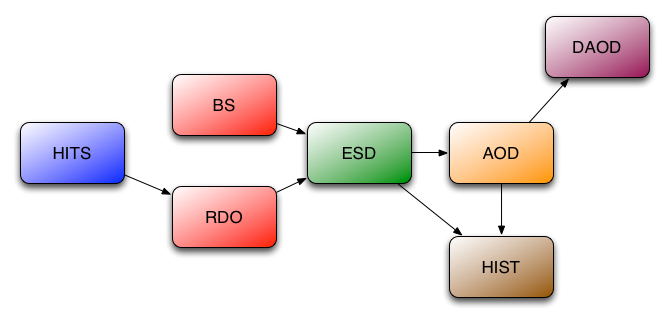Reco_tf.py is the ATLAS general purpose reconstruction algorithm, containing each component of offline reconstruction. Of course, here we are only concerned with tracking, but it is important to keep in mind that it is just one component of a much larger essential process.
Reco_tf is able to process RAW and RDO (simulated RAW) data down through to DAOD, which is then further processed through each analysis’s ntupler of choice designed for their particular needs. It will start with whichever input you give it and execute the appropriate steps to get to the final data product you require, specified with the patterns --inputDATATYPEFile and --outputDATATYPEFile – i.e, for making a DAOD it is possible to give as an input file AOD, ESD, RDO, RAW, or HITS. Outputs that are needed as part of the workflow but are not specified as the output data type will create a temporary output file e.g tmp.ESD.
Tracking occurs very early on in reconstruction (and is the most computationally intensive part of the reconstruction chain!) This means tracking studies generally need RDO/RAW as input. Then we have the possibility of running alignment, primary/secondary vertexing, etc. on ESD/AOD.
In the following sections we’ll take a look at the “innards” of a reco_tf.py and learn how to decipher its various components.
